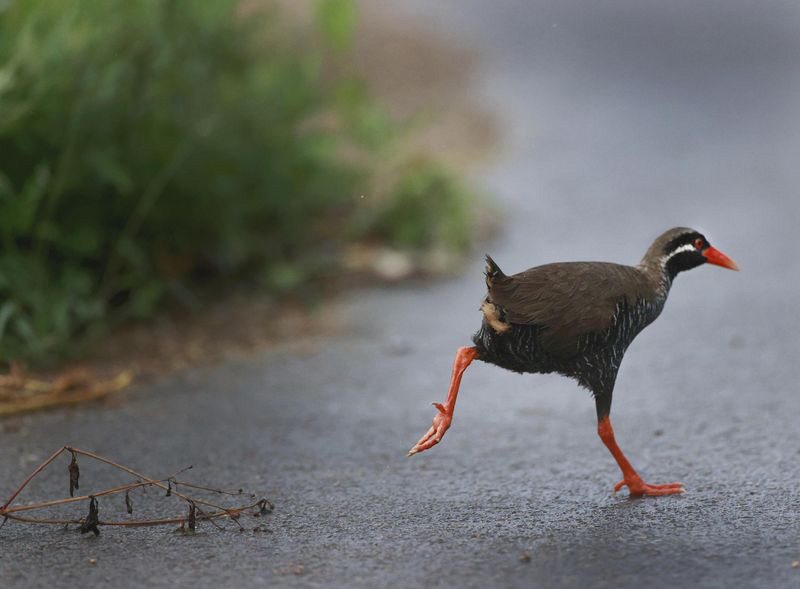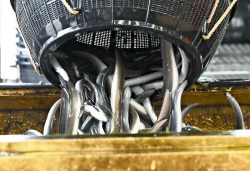
An Okinawa rail seen in the village of Kunigami, Okinawa Prefecture, June 2021.
13:22 JST, January 31, 2022
NAHA — Forty years have passed since researchers discovered the Okinawa rail, a rare, flightless bird found only in the northern part of the main island of Okinawa Prefecture.
The species, known as Yanbarukuina in Japanese, weathered a drastic drop in numbers in the mid-’00s but has been thriving in recent years, thanks to the preservation efforts by researchers and local government.
In 1975, the Yamashina Institute for Ornithology, an avian research institute in Chiba Prefecture, received reports of a bird about the size of a Japanese bantam walking around the mountainous areas of Okinawa Island.
“We never imagined to find an unknown bird in Japan,” said Kiyoaki Ozaki, 70, now deputy director of the institute.
In the summer of 1981, a newly formed research team including Ozaki visited the village of Kunigami in the prefecture, where they managed to capture a skinny bird with muscular legs. Upon holding it in his hand, Ozaki knew immediately that the bird couldn’t fly. The team soon learned that it favored thicketed land and roosted in trees. The following December, the institute published a paper describing the creature as a new species.
Initially, some of the institute’s researchers were keen to name the species Okinawakuina. However, it was eventually agreed to call the bird Yanbarukuina, to incorporate “Yanbaru,” the name of the area where the bird was discovered. “It’s crucial to have the understanding of the area’s residents to ensure the species’ protection,” Ozaki explained.
The government declared the bird a Natural Monument of Japan in 1982.
There were an estimated 1,800 Okinawa rails in 1986, but this number had plummeted to 700 in 2005 due to attacks by feral cats and mongooses — the latter released to control local habu snakes. Reining in the mongoose population has helped rail numbers recover to around 1,500 today. Even so, the bird is classified as a Vulnerable Species in the Environment Ministry’s Red Data Book of extinct and endangered species.
“The discovery of the Okinawa rail was one of the factors that brought the region attention,” Ozaki said. “I’ll continue to do my utmost to protect and study the species.”
"Science & Nature" POPULAR ARTICLE
-

Genome Study Reveals Milestone in History of Cat Domestication
-

Big Leap in Quest to Get to Bottom of Climate Ice Mystery
-

Security Camera Footage Vulnerable to Outside Access; Investigation Finds 3,000 Pieces Exposed Online
-

Paws on Parade: Nairobi’s Dogs Dazzle at ‘Pawchella’
-

Japanese Eels Escape New Regulation in Vote at CITES Meeting, Avoiding Higher Prices for Dealers and Diners
JN ACCESS RANKING
-

Keidanren Chairman Yoshinobu Tsutsui Visits Kashiwazaki-Kariwa Nuclear Power Plant; Inspects New Emergency Safety System
-

Imports of Rare Earths from China Facing Delays, May Be Caused by Deterioration of Japan-China Relations
-

University of Tokyo Professor Discusses Japanese Economic Security in Interview Ahead of Forum
-

Japan Pulls out of Vietnam Nuclear Project, Complicating Hanoi’s Power Plans
-

Govt Aims to Expand NISA Program Lineup, Abolish Age Restriction


























